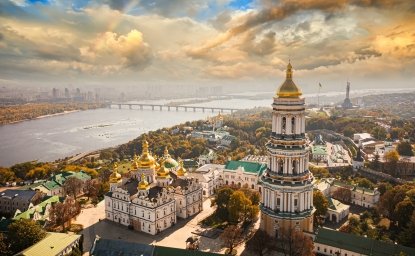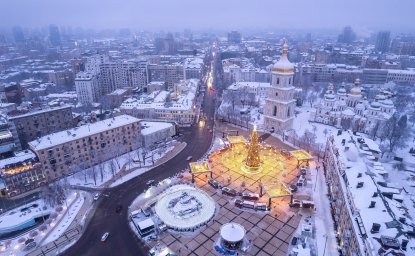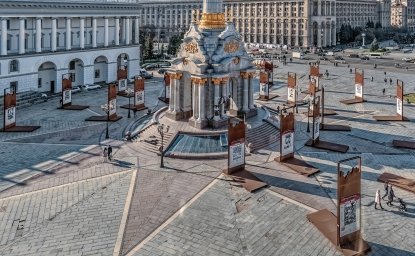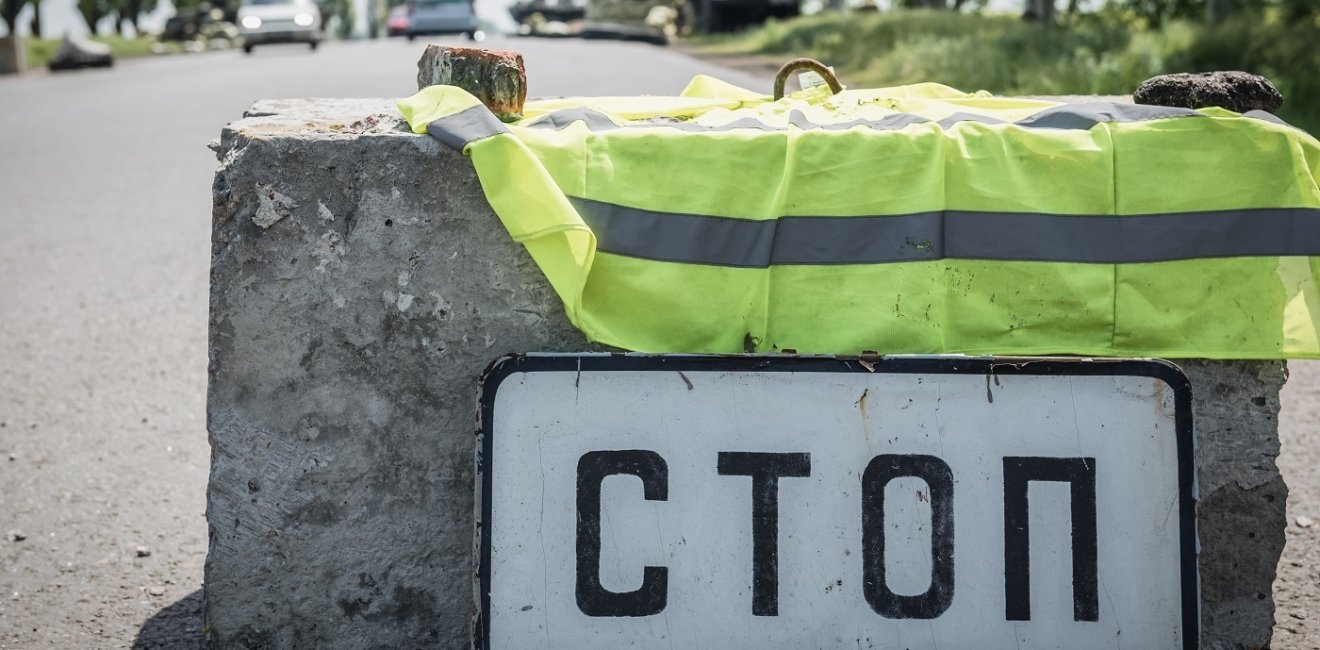
A blog of the Kennan Institute
Thirty-something self-taught photographer and cycling enthusiast Lesha Berezovskiy, like many Kyivans of his age, is only a generation or two removed from the village. Born in the eastern Ukrainian village Novoaidar, Berezovskiy and his mother moved to the only slightly larger Donetsk town of Yenakiieve while he was still a schoolboy. He returned to his grandparents’ village every holiday break and delighted in exploring its fields and surrounding forest. He eventually made his way to Kyiv, where he became known for his photography capturing the capital’s vibrant rave scene, his extended cycling trips around Ukraine, and trips abroad.
Berezovskiy’s photographs began to catch wider attention as his portfolio grew. He began publishing and exhibiting throughout Europe, where his gift for capturing simple semi-documentary images won an expanding list of devotees. Then, war broke out in 2014.
Berezovskiy’s ancestral village ended up less than 20 miles west of the western border of so-called Luhansk People’s Republic. He saw how the pressure of war transformed the bucolic forests and fields of his childhood memories. The war came to town early on. Villagers began to leave, the local economy imploded, and Ukrainian military units moved in. He rushed back to capture the peaceful life he knew would be lost in a stunning blog, Small Town on The River.
These encounters primed Berezovskiy for the February 2022 full-scale Russian invasion. He grabbed his camera as the first rockets exploded over Kyiv and began travelling around Ukraine, seeking out images of the home front. He collected photographs of civilians trying to make their way through war-torn landscapes: a cyclist riding along a bomb-damaged highway, apartment windows taped up for protection against explosion, villagers with their burned-out cars. His unfiltered images capture the challenging realities of a society at war.
They also reveal a steadfast commitment to living life as “normally” as possible. They serve as a visual manifestation of a ubiquitous civil society bent on sustaining self-determination. This summer, Swiss publisher Sturm & Drang has brought out Berezovskiy’s very personal visual chronicle of 15 months of war in the volume We Stay.
Berezovskiy was not alone in his response to war. He joined with other Kyiv artists trying to use art to push back the Russian campaign of cultural annihilation. Only a few weeks after the beginning of hostilities, Kyiv’s Museum of Contemporary Art NGO established the Ukrainian Emergency Art Fund to fill in the gaps left by shuttered official institutions, with independent projects aimed at keeping Ukraine’s culture alive and vibrant. This initiative has captured international attention. Berezovskiy’s photographs of 19 artists who have chosen to remain in Kyiv were featured in the Financial Times in September.
Berezovskiy and other Ukrainian artists have directed their attention to everyday life on the home front for inspiration. They value the gallantry and heroism of soldiers on the front line, since their resistance and bravery are obvious. Instead, they seek out a quieter, more domestic fortitude that has been just as important to Ukraine’s survival: anti-tank defenses on quiet residential streets, children hunkering down during an air raid, apartment buildings somehow lit up despite attacks on power stations. Beresovskiy seeks out these images and, in the process, reveals the deep resistance to the Russian invaders and a profound commitment to keeping Ukraine Ukrainian. As his new book proclaims, “We Stay!”
The opinions expressed in this article are those solely of the author and do not reflect the views of the Kennan Institute.
Author

Former Wilson Center Vice President for Programs (2014-2017); Director of the Comparative Urban Studies Program/Urban Sustainability Laboratory (1992-2017); Director of the Kennan Institute for Advanced Russian Studies (1989-2012) and Director of the Program on Global Sustainability and Resilience (2012-2014)

Kennan Institute
The Kennan Institute is the premier US center for advanced research on Eurasia and the oldest and largest regional program at the Woodrow Wilson International Center for Scholars. The Kennan Institute is committed to improving American understanding of Russia, Ukraine, Central Asia, the South Caucasus, and the surrounding region though research and exchange. Read more

Explore More in Focus Ukraine
Browse Focus Ukraine
Filling the Empty Spaces of My Consciousness

Who Owns Tradition? Ukraine’s Church Controversy

Words and Music of Good Cheer Fill the Air

